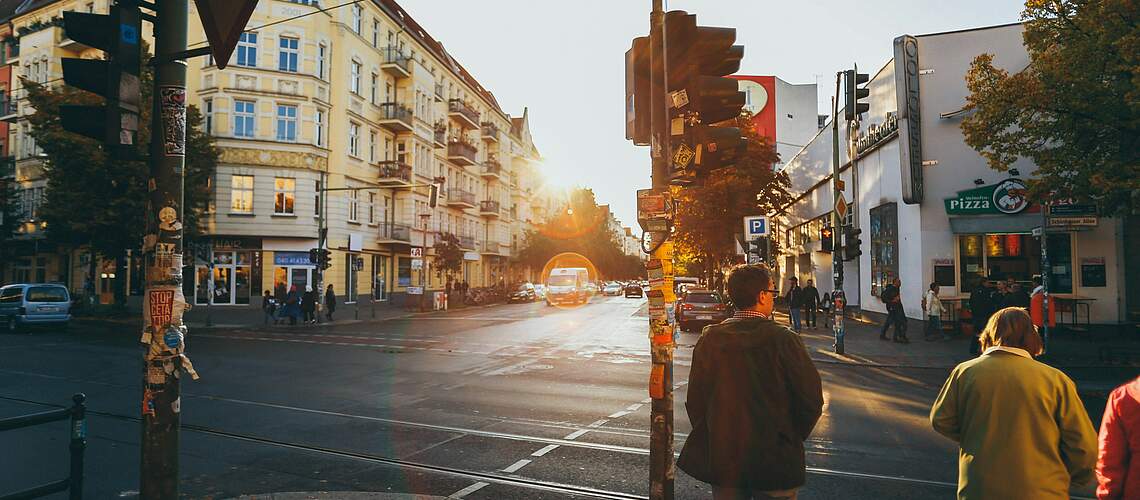
Traffic in Germany: navigating safely through the German traffic jungle
From the perspective of Julia Braitmaier, customer advisor at the Carl Duisberg Training Center Radolfzell
During my previous stays abroad, I have had a wide variety of experiences with traffic rules and have often missed the German traffic regulations - be it in the rice terraces of Yuanyang in China, where there were fewer paved roads than free-roaming pigs, in the outback of Australia, where four-wheel drive suddenly became a vital companion, or on the congested streets of Genoa, where I feared for more than just the life of my car. This made me think about what I would have liked to know about traffic rules before coming to Germany. In this blog post, I will therefore give you a brief overview of road traffic in Germany.
Traffic rules for pedestrians in Germany
If there is a sidewalk next to the road, pedestrians must always use it. If there are no paths, they are allowed to walk on both sides of the road within built-up areas. Outside built-up areas, they must cross over to the left-hand side.
In Germany, there are various rules on how to cross a road: As a pedestrian, you usually have to wait at a traffic light. When the traffic light changes from red to green, you can cross the road. Apart from that there are also crosswalks, in Germany called “Zebrastreifen” which means stripes of a zebra due to the white stripes on the road. Pedestrians have priority here. But be careful: make sure that the cars actually stop and don't just start walking. If there are no traffic lights or crosswalks nearby, you are allowed to cross the road if there are no cars in sight.
Cycling in German road traffic
Cyclists also have to obey special rules in Germany. As bicycles are classified as vehicles, they must stay on the right side of the road, just like cars. However, if there are specially designated cycle paths, these must be used. This also applies to racing cyclists. When turning, cyclists should also give a hand signal to the left or right to indicate their direction of travel.
All cycle paths in Germany are marked with round blue signs showing a bicycle. If the cycle path and pedestrian path are next to each other, a bicycle and people are shown on the sign.
The most important rules when driving in Germany
1. speed limit for cars
One of the most important traffic regulations in Germany is the speed limit for cars. Within built-up areas the speed limit is 50 km/h, within residential areas and near schools it is usually 30 km/h. It is important to always adhere to these speed limits in order to avoid accidents and ensure the safety of all road users. Unless otherwise stated, there are no speed limits on German highways. The guideline speed that drivers can use as a guide is 130 kilometers per hour.
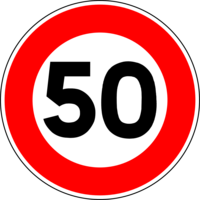
2. Right of way rules in road traffic
Right of way in road traffic is regulated in particular by traffic lights and road signs. These are some of the most important signs:
“Vorfahrt”: You have right of way and may drive.

“Vorfahrt gewähren”: The other cars have right of way and you must wait.
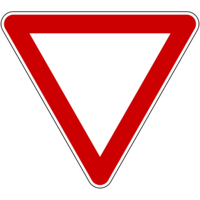
“Halt, Vorfahrt gewähren”: You must stop at the STOP sign and give way to other cars. You must stop even if there is no car in sight.
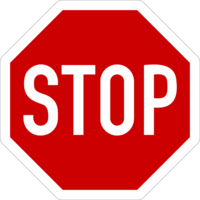
“Vorfahrt” (at the next junction or intersection): You may drive first at the next junction or intersection.
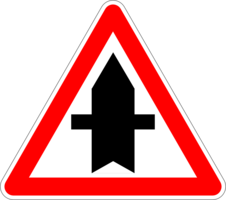
Exception "rechts vor links"
If there are no traffic lights or signs at junctions and intersections, the traffic rule "right before left" applies in Germany: Cars or vehicles coming from the right have right of way. It does not matter whether they are driving straight ahead or turning.
Penalties for traffic violations
Various penalties can be imposed for violating traffic regulations in Germany. The amount of the penalty - e.g. in the form of a fine, traffic points or a driving ban - varies depending on the type of offense.
In Germany, for example, there is a 0.5 per mille limit for drunk drivers. If the police catch a person with a blood alcohol concentration of 0.5 per mille or more at the wheel, this is considered an administrative offense and is punished to varying degrees: First offense: 500 euro fine, 2 points, 1 month driving ban. Second offense: 1000 Euro fine, 2 points, 3 months driving ban. During the probationary period and under the age of 21, there is even a zero blood alcohol limit. A blood alcohol limit of 1.6 also applies to cyclists.
Examples of other offenses include exceeding the speed limit, running a red light, parking illegally or using a phone without a hands-free device while driving. To avoid fines and points, it is important to comply with the traffic regulations.
Of course, this is only a brief insight into the traffic rules in Germany. But I hope it will help you to find your way around the German traffic jungle.
You can find more interesting articles about living in Germany on our blog.
